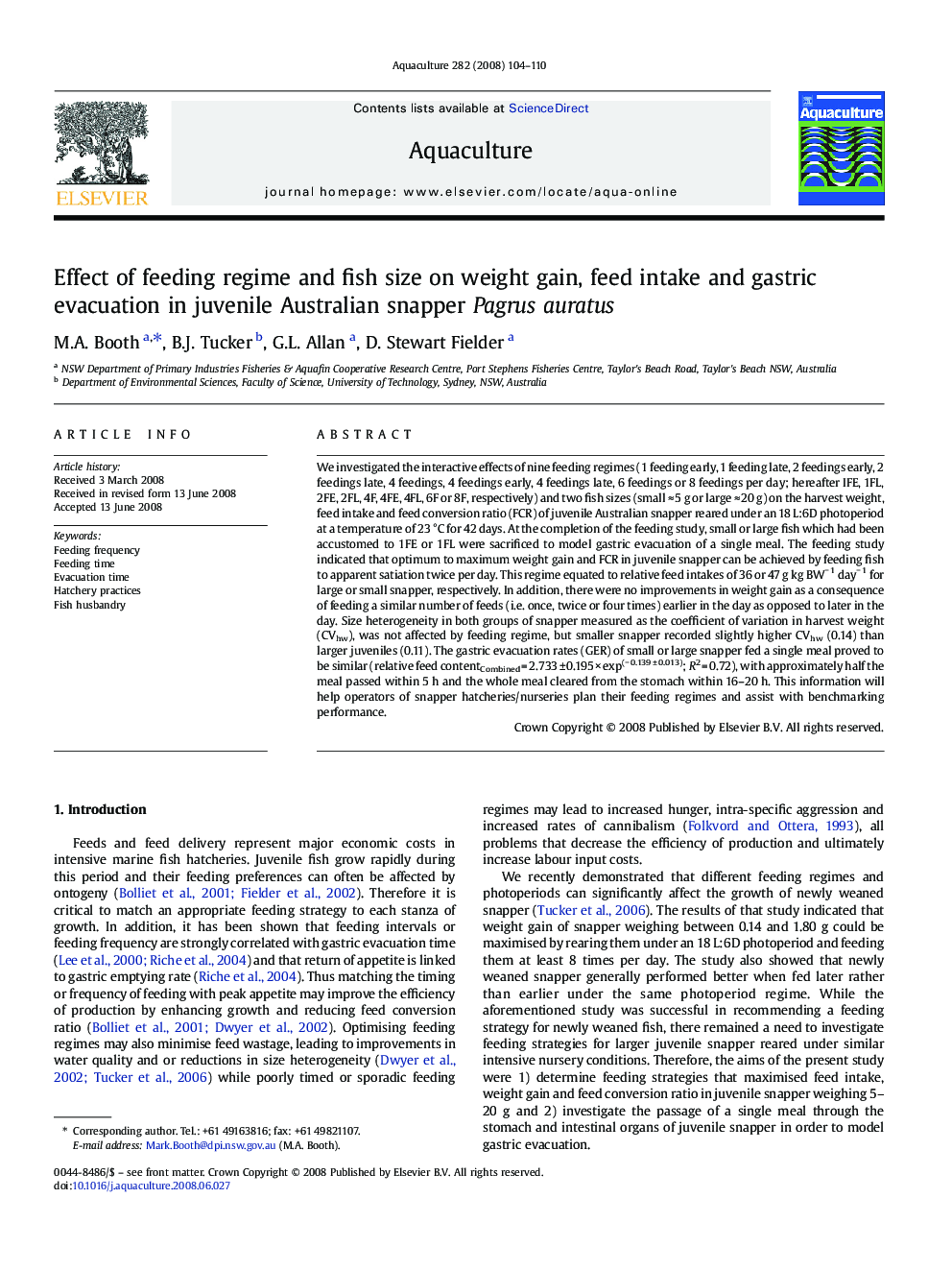| کد مقاله | کد نشریه | سال انتشار | مقاله انگلیسی | نسخه تمام متن |
|---|---|---|---|---|
| 2424571 | 1552959 | 2008 | 7 صفحه PDF | دانلود رایگان |

We investigated the interactive effects of nine feeding regimes (1 feeding early, 1 feeding late, 2 feedings early, 2 feedings late, 4 feedings, 4 feedings early, 4 feedings late, 6 feedings or 8 feedings per day; hereafter IFE, 1FL, 2FE, 2FL, 4F, 4FE, 4FL, 6F or 8F, respectively) and two fish sizes (small ≈ 5 g or large ≈ 20 g) on the harvest weight, feed intake and feed conversion ratio (FCR) of juvenile Australian snapper reared under an 18 L:6D photoperiod at a temperature of 23 °C for 42 days. At the completion of the feeding study, small or large fish which had been accustomed to 1FE or 1FL were sacrificed to model gastric evacuation of a single meal. The feeding study indicated that optimum to maximum weight gain and FCR in juvenile snapper can be achieved by feeding fish to apparent satiation twice per day. This regime equated to relative feed intakes of 36 or 47 g kg BW− 1 day− 1 for large or small snapper, respectively. In addition, there were no improvements in weight gain as a consequence of feeding a similar number of feeds (i.e. once, twice or four times) earlier in the day as opposed to later in the day. Size heterogeneity in both groups of snapper measured as the coefficient of variation in harvest weight (CVhw), was not affected by feeding regime, but smaller snapper recorded slightly higher CVhw (0.14) than larger juveniles (0.11). The gastric evacuation rates (GER) of small or large snapper fed a single meal proved to be similar (relative feed contentCombined = 2.733 ± 0.195 × exp(− 0.139 ± 0.013); R2 = 0.72), with approximately half the meal passed within 5 h and the whole meal cleared from the stomach within 16–20 h. This information will help operators of snapper hatcheries/nurseries plan their feeding regimes and assist with benchmarking performance.
Journal: Aquaculture - Volume 282, Issues 1–4, 30 September 2008, Pages 104–110